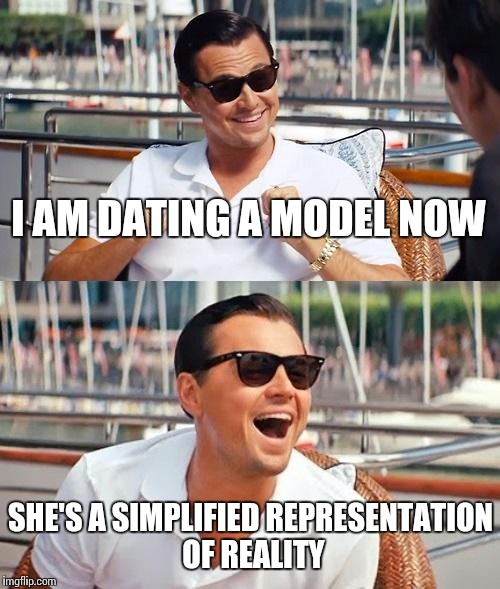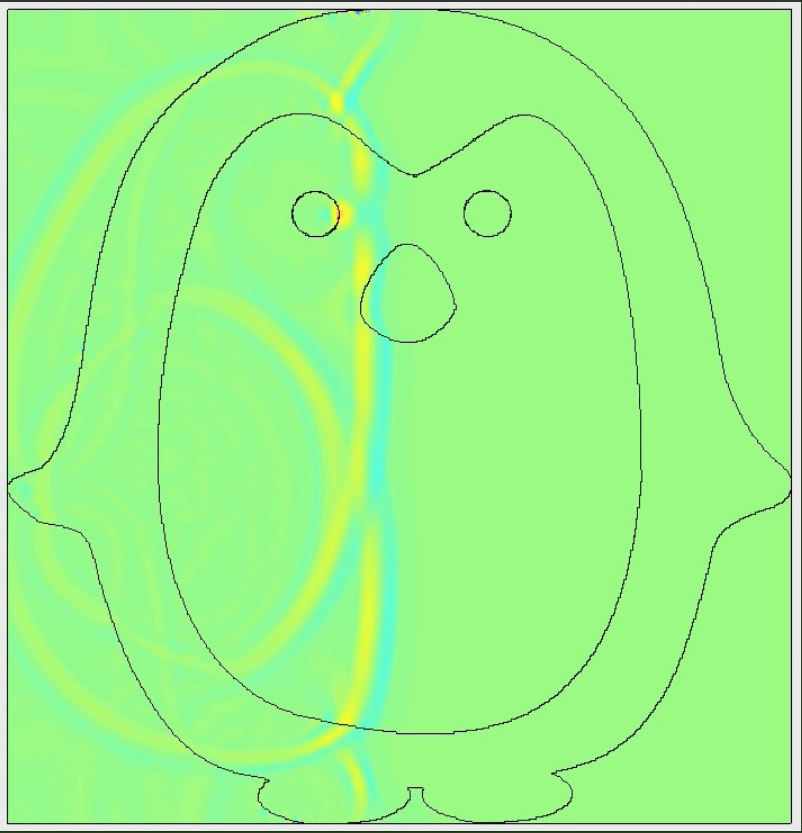Wait, what do I mean?
It’s perhaps a bit of a stereotype, but scientists don’t always know how to talk to non-scientists. To be completely honest, scientists don’t always know how to talk to other scientists! This can partially be attributed to the use of jargon – lingo that is used by a specific group of people that is difficult for people outside that group to understand.
Let me give an example.
If you look up the word “model”, Mirriam-Webster gives 14 different definitions; that’s already cause for misunderstandings without any science coming in!
Meaning number one: “I’m too sexy for my shirt!”
model noun [ mod·el \ ˈmä-dᵊl ]
9 : one who is employed to display clothes or other merchandise //has appeared as a model in ads for swimsuits
In every-day, fashion lingo, a model is someone who shows off clothes or other merchandise on billboards, in magazines, on the catwalk, in tv ads, etc.
This version of the word model is probably not what any scientist means when they are talking about their model. Except maybe if they’re bragging about that “model they dated back in college,” but we were all dating models then, weren’t we?

Meaning number two: To see what cannot be seen
model noun [ mod·el \ ˈmä-dᵊl ]
11: a description or analogy used to help visualize something (such as an atom) that cannot be directly observed
Some things we can’t really take a picture of. Or even if we can, it’s difficult to gather any meaningful information from the picture. A model of that thing can help; such as a model of an atom, or our solar system, or the universe. Such a model is usually simplified to allow a clearer understanding, and as a result, it is never 100% accurate.
For example, the model of the atom has gone through many iterations and has become more representative of the physical reality (in so far as we understand it). That doesn’t mean that older models are wrong, they’re often just insufficient. For many purposes, the Bohr model is enough to explain the formation of bonds and many aspects of physics and chemistry even though the quantum model is more details, and is needed to describe more advanced principles (like the types of bonds).

From xkcd
Meaning number three: To the computer!
model noun [ mod·el \ ˈmä-dᵊl ]
12: a system of postulates, data, and inferences presented as a mathematical description of an entity or state of affairs
also: a computer simulation based on such a system (e.g. climate models)
But not the type (i.e. model) of your computer. Wait. This is confusing.
The model of your computer might be 80NW. But a computer model – or a computer simulation – is a mathematical representation of a system and nowadays those mathematical representations are often running within a computer (because they can do math faster). Basically, a computer model/simulation is a program that is used to predict (hopefully) useful information based on a number of equations (or from learning data in the case of machine learning) that have been predefined.
In my PhD, I created a computer model for how ultrasound interacts with tissue. I told the program the properties of the ultrasound wave (its frequency, its shape, etc.); the properties of the tissue (size and shape, but also how stiff the tissue is); and the boundary conditions (how big the experiment was). After letting it run for some time, it would give me information back that I could use to understand this interaction better and compare it with results from physical experiments.

Computer models are very useful. Sometimes we would have to run experiments that are not possible to do physically, due to lack of resources or time or any other reason. Running a computer model is relatively cheap. In other cases, we are trying to make predictions on what will happen in the future, trying to do experiments on the unknown. An example of that is climate models.
Meaning number four:
model noun [ mod·el \ ˈmä-dᵊl ]
14: ANIMAL MODEL : an animal sufficiently like humans in its anatomy, physiology, or response to a pathogen to be used in medical research in order to obtain results that can be extrapolated to human medicine
also : a pathological or physiological condition that occurs in such an animal and is similar to one occurring in humans
We are complex organisms, with a bunch of different types of organs and different types of cells that have a bunch of different processes going on at a bunch of different times. Sometimes, researchers can use cell lines – these are cells that have been isolated (often decades ago) and immortalized (they can be grown in petridishes and cultured for quite some time in said petridishes) to study biological processes and the effects of potential new drugs. But these isolated cells never give the whole picture (because they are so isolated), and sometimes animal models are needed for the next phase of genetic studies, cancer research, or drug development.
So unlike what I picture in my mind when I hear “animal model”, this does not mean mice in the bikini special. Rather, certain animals have traits that mimic a human condition or disease in such a way that research is meaningful. Whether it is ethical or not – that is a whole other discussing but just let me say that there are a lot of regulations and the principles of the 3Rs (Replacement, Reduction, and Refinement) are enforced in any proper lab conducting experiments using animal models.
The other note to make is that animal models don’t always give us the full information either. Again, it’s a model, An approximation. But since human experimentation is – well – inhumane, that’s often the only way to study genes and test drugs in a working-body-context.
A note on scientific theories
I don’t remember where I read this but: science theories are models for how the world works. In other words, like any model, they are not perfect! But they are a great way to try and understand the world better with our fairly limited brain capacity*. The fact that they are not perfect is actually really exciting: there is always more to discover, more to learn, more to understand!
In any case, if anyone tells you that they’re a model, if you know what they mean, you might want to ask them to specify… Just to avoid confusion.
*If you find this offensive, remember I’m mostly offending myself.
Definitions are taken directly from Mirriam-Webster dictionary.


